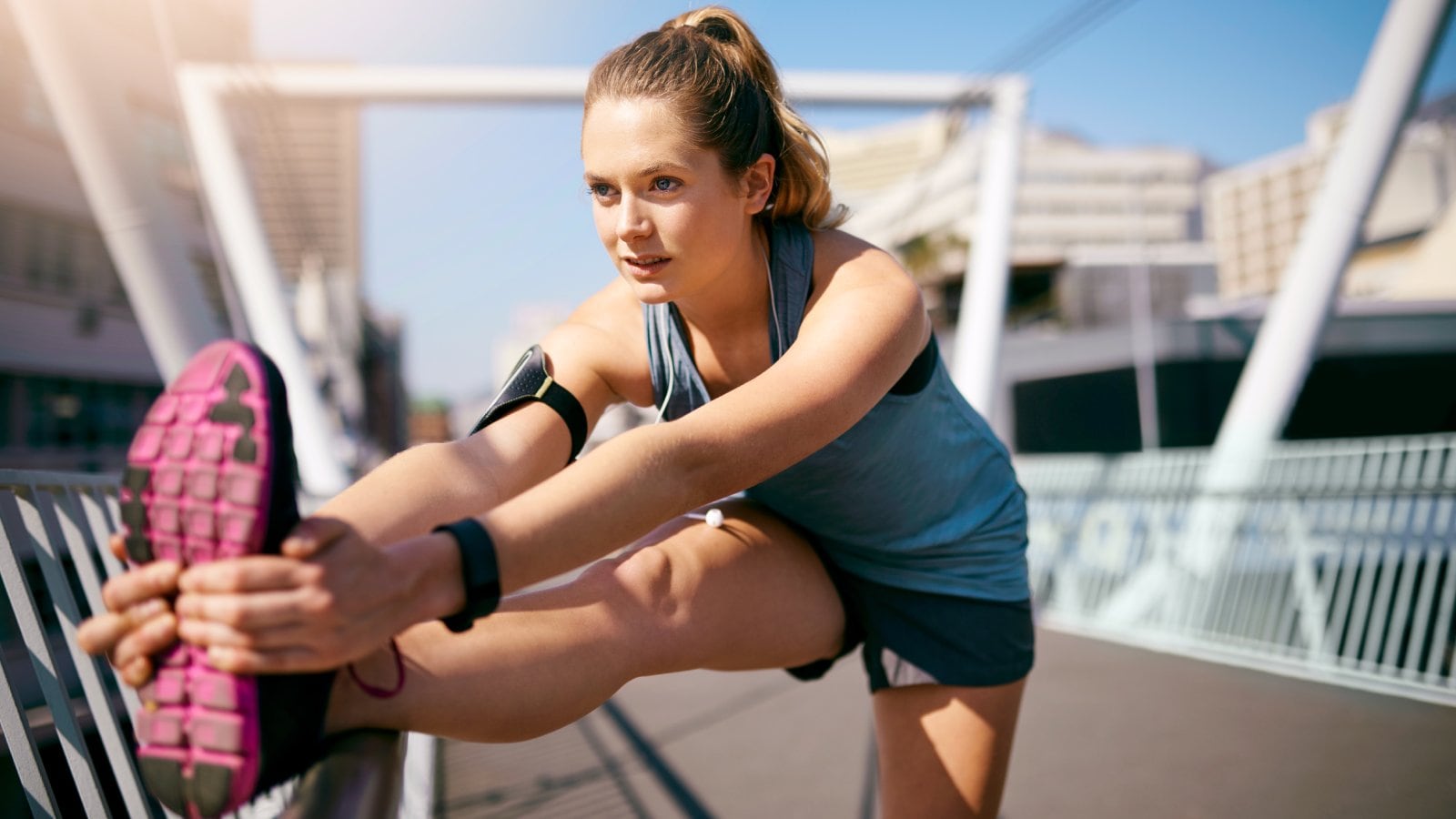
Get Ready to Sweat: 15 Essential Warm-Up Exercises for Muscle Strengthening
3 months ago | 5 Views
Have you ever skipped your warm-up before exercising? A good warm-up is not just a formality--it is a key step that gets your body ready for exercise. If you jump straight into a tough workout without warming up, you could increase the risk of muscle strain, and injuries, or make your performance less effective. A proper warm-up promotes blood circulation, helps get rid of stiff joints, and slowly raises your heart rate, helping you make the most of your workout. Whether you are heading to the gym, going for a run, or doing yoga, spending a few minutes warming up can make a big difference. Dive into how to warm up before exercising to strengthen the muscles and keep your health in check!
Benefits of warm-up exercises
Before diving into how to warm up before exercise, know 5 reasons why you should follow a warm-up routine:
1. Increases flexibility and range of motion
Warm-up exercises help gently stretch joints and muscles, improving flexibility and allowing for a wider range of motion during physical activity.
2. Boosts blood circulation
By gradually increasing heart rate and blood flow, warm-ups ensure muscles receive more oxygen and nutrients, which boosts endurance and overall performance, supports a study published in the Journal of Exercise Rehabilitation.
3. Lowers the risk of injuries
One of the benefits of learning how to warm up routine is a lower risk of injuries. It prepares muscles and joints for more intense movements. A 2008 Norwegian study reveals fewer and less severe injuries in female soccer athletes compared to those who did not warm up and do not know how to warm up.
4. Reduces muscle tension and pain
Warm-up exercises help alleviate stiffness and tightness in muscles, reducing discomfort and enhancing mobility for smoother movement during workouts.
5. Improves workout performance
Activating key muscle groups during a warm-up ensures better coordination, focus, and muscle engagement. A study published in the Journal of Strength and Conditioning Research suggests that warming up helps your muscles work more effectively during the workout, leading to better performance.
How to warm up before exercise?
Here’s how to warm up before exercise with these 15 exercises at home:
1. Marching in place
- Stand tall with your feet hip-width apart and your arms by your sides.
- Begin marching by lifting one knee towards your chest, then switch legs.
- Continue alternating legs, keeping your back straight, and engaging your core.
If you are wondering how to warm up, then make sure to add marching in place into your routine. It increases heart rate, warms up the hip flexors, quads, and lower body muscles, and prepares the body for more intense movement.
2. Wrist rotation
- Extend your arms in front of you with palms facing down.
- Rotate your wrists clockwise for 10-15 seconds, then counterclockwise for the same duration.
- Repeat the movement, ensuring your arms remain straight.
Wrist rotations enhance flexibility in the wrist joint, improve range of motion, and help prevent wrist strain during upper-body workouts. This is one of the important exercises in learning how to warm up.
3. Neck rotation
- Stand with your feet shoulder-width apart and your shoulders relaxed.
- Slowly rotate your head in a circular motion, first clockwise, then counterclockwise.
- Perform this movement gently, avoiding any jerking motions.
Neck rotations help to release tension in the neck and shoulders and improve mobility in the cervical spine, preparing the upper body for a how to warm up session.

4. Arm circles
- Extend your arms straight out to your sides, parallel to the ground.
- Start by making small circles with your arms and gradually increase the size.
- Perform for 20-30 seconds in one direction, then reverse the motion.
Another exercise in how to warm up before the workout list is arm circles. It warms up the shoulders, improving flexibility and mobility in the shoulder joints, which is particularly beneficial before upper-body exercises.
5. Torso rotations
- Stand with your feet shoulder-width apart and your knees slightly bent.
- Place your hands on your hips or extend your arms out in front of you.
- Gently rotate your torso to the right and left, keeping your hips stable.
- Perform this movement for 30 seconds, slowly increasing the range of motion.
Torso rotations warm up the spine, obliques, and core muscles, preparing them for rotational movements and enhancing flexibility.
6. Air punches
- Stand with your feet hip-width apart and your knees slightly bent.
- Raise your hands in front of you as if you are about to punch.
- Throw alternating punches with each arm, focusing on quick, controlled movements.
- Keep your core tight and engage your shoulders as you punch.
Air punches activate the arms, shoulders, and core muscles—an exercise you should remember while learning how to warm up. It also increases your heart rate to improve cardiovascular readiness.

7. Side body stretch
- Stand tall with your feet hip-width apart and your arms at your sides.
- Lift your right arm overhead and gently lean to the left, feeling a stretch along your right side.
- Hold for 10-15 seconds, then switch sides and repeat.
Side body stretches target the oblique muscles and help increase flexibility in the torso, improving the overall range of motion.
8. Step-ups
- Find a stable platform, such as a step or bench.
- Step one foot up onto the platform, then bring the other foot up to join it.
- Step down one foot at a time and repeat, alternating the leading leg.
Step-ups engage the legs, particularly the quads, hamstrings, and glutes, while also providing a low-impact cardio exercise.
9. Inchworm
- Stand with your feet hip-width apart and bend forward at the waist, placing your hands on the floor.
- Walk your hands forward until you are in a plank position.
- Hold for a second, then walk your feet towards your hands and stand back up.
- Repeat the movement for 5-10 repetitions.
As you understand how to warm up before exercise, you cannot avoid inchworms. It stretches the hamstrings and activates the core, shoulders, and chest muscles, making it an excellent full-body warm-up.
10. Hamstring stretch
- Stand with your feet hip-width apart and take a step forward with your right leg.
- Keep your right leg straight and gently bend your left leg as you reach down towards your right foot.
- Hold for 15-20 seconds, then switch legs.
This stretch targets the hamstrings, improving flexibility in the legs and preparing the lower body for squats, lunges, or running.
11. Jumping jacks
- Stand with your feet together and your arms at your sides.
- Jump your feet out to the sides while raising your arms overhead.
- Jump back to the starting position and repeat.
As a part of understanding how to warm up, ensure that jumping jacks are added to your daily routine. It is an effective cardio exercise that elevates the heart rate, activates the entire body, and prepares the muscles for more intense activity.

12. Cat-cow stretch
- Begin on your hands and knees in a tabletop position, with your wrists aligned under your shoulders and your knees under your hips.
- Inhale as you arch your back (cow pose), lifting your chest and tailbone toward the ceiling.
- Exhale as you round your back (cat pose), tucking your chin toward your chest.
Repeat this flow for 10–15 breaths.
The cat-cow stretch improves spinal flexibility, mobilizes the back, and gently stretches the neck, helping prepare the body for both upper and lower body movements.
13. High knees
- Stand with your feet hip-width apart and your arms bent at 90 degrees.
- Lift your knees toward your chest one at a time, trying to bring them as high as possible.
- Alternate legs quickly, pumping your arms in sync with your knees.
High knees can be the answer to your how to warm up before exercise query. It increases heart rate, activates the hip flexors and core, and improves coordination, making it an excellent warm-up for running or cardio exercises.
14. Alternate lunges
- Stand tall with your feet hip-width apart and your hands on your hips.
- Take a step forward with your right leg and lower your body into a lunge, keeping your knee above your ankle.
- Push off your right foot to return to the starting position and repeat on the left leg.
Lunges target the quads, glutes, and hamstrings, improving lower body strength and mobility while engaging the core for balance.
15. Mountain climbers
- Begin in a plank position with your hands under your shoulders and your body in a straight line.
- Bring your right knee towards your chest, then quickly switch legs, bringing your left knee forward while pushing your right leg back.
- Continue alternating legs at a steady pace.
While learning how to warm up before exercise, make sure you practise mountain climbers. This is a full-body exercise that increases heart rate, activates the core, shoulders, and legs, and enhances overall endurance.

How long should a warm up last before exercise?
A proper warm-up helps widen your blood vessels, ensuring that your muscles receive enough oxygen, while also increasing muscle temperature and flexibility. This not only improves workout efficiency but also reduces the risk of injury. Gradually elevating your heart rate during the warm-up reduces stress on the heart, making your workout safer.
The American Heart Association suggests aiming for a 5 to 10-minute warm-up. The more intense the exercise, the longer you should warm up. Perform the activity you plan on doing—such as running, walking, or cycling—at a slower pace, like jogging or walking slowly. Incorporate full-body movements to make sure you gain all the benefits of your workout session.
While a standard warm-up before exercise works for most people, you should always consult a professional before making changes to your workout.
Read Also: Bhagyashree's Essential Diet Tips for a Healthier 2025: Listen to Your Body





















